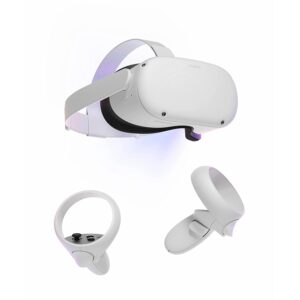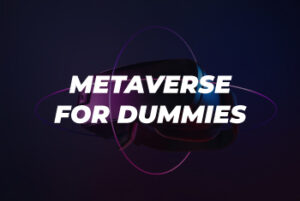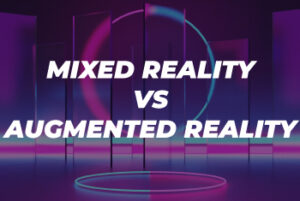

What’s the difference: Digital twin vs Metaverse
What’s the difference: Digital twin vs Metaverse
In a world where businesses are becoming increasingly technical and digital, a question that is asked a lot is what is the difference between digital twin vs metaverse?
The Metaverse and digital twins have the power to transform our virtual lives. The Metaverse requires a digitised copy of the real world as an entry point in order to provide a fully connected, immersive, and engaging 3D experience.
With the Metaverse constantly growing, many businesses and enterprises are now exploring and building on the metaverse-based fundamentals in order to introduce new possibilities. Further, by using digital twins, organisations are able to initiate dimensionally precise real-life spaces into the metaverse virtual mirror world.
Let's start with look at what a digital twin is
A digital twin is a digital representation of a real-world object or system. It is a model that has the ability to mirror a real-life physical object, organisation, person or process. So it is simply an assistance system for production facilities that use integrated simulation models to find solutions quickly when problems arise. Simulation inside the twins helps the user determine your product’s ideal operational workflow. As a crucial part of a digital twin, these simulations help draw on current data flows and efficiently find clear options to develop the system operators and reach a decision when problems arise.
What is the Metaverse?
In short, a metaverse is the internet, but in 3D. It is a form of digital interaction where connected, virtual experiences can either simulate the real world or create worlds beyond it. The term metaverse does not refer to a type of technology or data, but rather a broad shift in how we interact using technology. With the number of daily VR users doubling since 2018, it’s no surprise that more and more developments are arising, even though its entry point is still significantly more expensive than consoles for the average consumer, VR statistics confirm that the VR industry and technology likewise is growing significantly in different areas of business.
Check out what the Meta Quest 2 can do here:
Digital twin vs Metaverse uses
With Facebook’s recent rebranding, the word “metaverse” has begun to be used more and more in various contexts. The top five uses for Digital twin vs Metaverse experiences are Gaming, shopping, fashion, education, tourism, and newly developing areas such as real estate.
Whereas digital twins are more used for areas such as construction, manufacturing, healthcare, supply chain and similarly to Metaverse, retail. Both Metaverse and digital twins are used for retail, so let’s look at how they do this differently. For digital twins, retailers can create digital twins of customer avatars to improve the customer experience they deliver. For example, retailers can provide fashion products to customers based on their digital twin models.
In the Metaverse, Fashion brands have taken the lead on participation. This makes sense given how central avatars are to interactions within games and metaverse platforms, participants have the ability to clothe and create a sense of uniqueness to their avatars and add their sense of style. In games alone, the market for skins was estimated to be worth $40 billion in 2021. An expanding list of fashion names has been getting involved with gaming and metaverse platforms. Notable brands include Nike, Louis Vuitton, Balenciaga, Gucci, and Zara.
What are the main differences between the two?
Both of these technologies are growing increasingly popular for businesses and development, and when deciding on digital twin vs Metaverse, although seemingly similar, it’s important to distinguish between the two.
The metaverse is the general connection between the digital world and the physical world such as augmented reality, virtual real estate, virtual concerts, and many more.
Whereas digital twins are simply building blocks of the metaverse. They act as a real-time digital copy of a physical object. Much like metaverses, digital twins can build entire worlds and populate them with digital personalised avatars. Both can grow as developers see fit but there are some limitations.
Firstly, metaverses can be created from scratch as they don’t need to be tied to any physically existing asset or basis. Whereas a digital twin requires an object or process to copy.
Another important factor is data. Digital twins exist around data integration. By utilising sensors attached to a real-world asset, real-time data forms that bridge connecting it to its virtual counterpart.
Metaverses don’t essentially require sensor data to exist on their own, though the potential to connect with real-time data could be easily developed.
How do digital twins and Metaverse technologies relate?
The Metaverse and the Digital twin technology can bring realism into the virtual world by creating exact replications of reality. Let’s imagine entering a virtual store of a fashion e-commerce company to try the clothes before buying them. It would be best for customers if their digital twin avatar could try the clothes first to match your accurate measurements.
As for a professional setting, for example, a meeting in a metaverse-powered meeting room will be productive if participants of the virtual meeting can interact and use a completely accurate replica of the company’s equipment and information system.
Digital twin technology can forward all these ideas into reality and help build a metaverse that is a precise reflection of reality. Digital twin and simulation technology will empower Metaverse to support remote maintenance workshops of machines that need to be serviced and potentially connected to a real workshop. These properties make digital twins one of the essential blocks of the Metaverse.
How do digital twins work in the Metaverse?
There are three main areas to be considered when discussing the incorporation of digital twins in the metaverse – Product, Production, and Performance.
- The product defines how we can use digital twins to design products in the metaverse, which are copied from real-world objects.
- Production relates to the use of digital twin technologies to verify the process of manufacturing products.
- The final component is performance, which refers to the use of data from the real-world counterparts of the digital objects, used to monitor, and the analysis of the performance of digital objects.
The performance offers insights, allowing businesses to build more efficient systems. Digital twins are one of the metaverse’s key building blocks because of their innate qualities.
While the metaverse can help us create virtual worlds and experiences beyond imagination, it will also be useful in creating exact replicas of reality. With their specific features and functionalities, digital twins can bring realism to the digital world.
In summary
Accessing digital twins and metaverse technology has created the potential for the use of many industries by initiating better prediction, tracking, resource management, optimisation, and quality control.
Further, by implementing technologies like VR, AR, machine learning, and blockchain, we can deliver even more precise and accurate predictions For services and products. With more and more companies adopting both technologies, we are certainly seeing a big change in our future of business.




